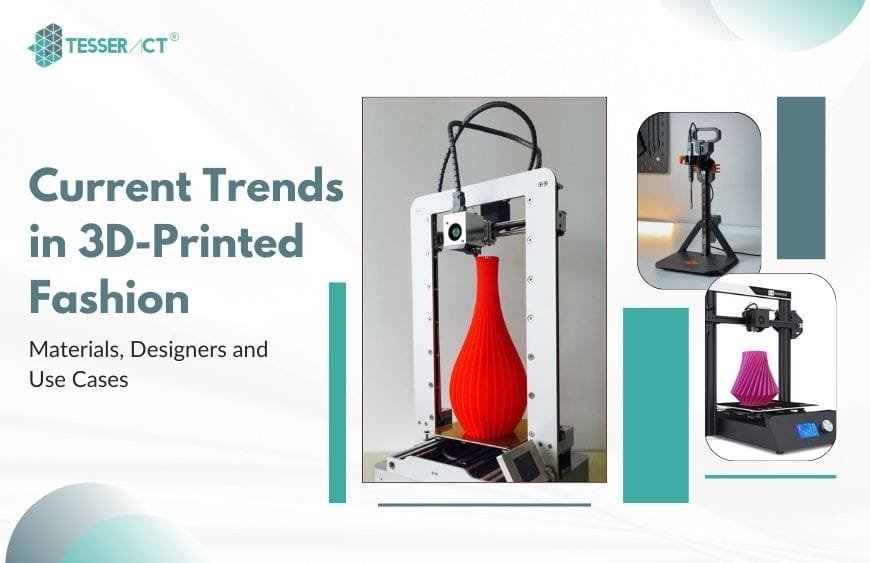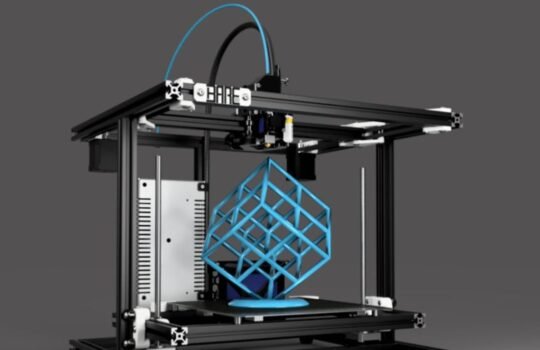Current Trends in 3D-Printed Fashion: Materials, Designers, and Use Cases

The worlds of high fashion and advanced manufacturing are intersecting like never before. 3D printing, once confined to prototypes and product design, is now walking the ramp. From avant-garde couture to wearable streetwear, 3D printed fashion is reshaping what we wear and how we produce it. For 3D printing service providers in India, this presents a timely opportunity to enter an emerging and high-impact niche.
The Fusion of Fashion and 3D Printing
Fashion has always embraced change. Now it is embracing additive manufacturing. With growing consumer demand for personalization, sustainability, and rapid innovation, 3D printing is revolutionizing apparel design and production. In India, design schools and indie brands are already experimenting with tech-driven fabrics. The shift from traditional tailoring to algorithmic, on-demand production is no longer futuristic. It is happening now.
Advanced Materials Powering 3D-Printed Fashion
Flexible and Wearable Polymers
The biggest breakthrough in 3D printed fashion is the development of flexible materials suitable for wear. Polymers like TPU (Thermoplastic Polyurethane) and Nylon (PA12) allow designers to create flowing, bendable, and breathable garments. These materials balance structural integrity with comfort, making them viable even in India’s varied climate zones.
Sustainable 3D Printing Filaments
With fashion being one of the most polluting industries globally, the rise of sustainable 3D printing is a breath of fresh air. Materials like PLA (Polylactic Acid) and recycled PETG are gaining popularity among designers conscious of both style and sustainability. For Indian fashion startups, this opens the door to eco-friendly clothing lines with minimal waste and on-demand production. This model is perfect for small-batch retail businesses.
Global Designers Leading the 3D-Printed Fashion Revolution

International Pioneers
Designers like Iris van Herpen have turned 3D printing into an art form, creating ethereal gowns that merge nature and algorithm. Julia Koerner blends architecture with wearable design, using digital fabrication for complex textures. Collaborations with 3D printing powerhouses like Stratasys and Materialise are pushing fashion tech boundaries even further.
Indian Fashion Innovators to Watch
In India, designers are catching on. Concept fashion shown at Lakmé Fashion Week has already included 3D printed pieces. Students at NIFT and Pearl Academy are prototyping digitally-first garments. Platforms like Tesseract are supporting this transition by offering design support, material consultation, and small-scale manufacturing for forward-thinking fashion creators.
Use Cases – From Catwalks to Consumer Fashion
Custom-Fit and Made-to-Order Fashion
The traditional Indian tailoring culture is deeply rooted in custom-fit garments. 3D printing elevates this by enabling scan-to-fit production, where garments are printed based on the user’s exact measurements. This allows for zero-waste production and a perfect fit. It is ideal for bridal wear, occasion fashion, and bespoke ethnic designs.
Footwear, Accessories, and Functional Fashion
The biggest growth area is fashion accessories. Think 3D printed shoes, belts, jewellery, and eyewear. These products are not only customizable but also economically viable for short-run manufacturing. Several Indian startups are launching entire brands based on 3D printed accessories, reducing dependency on imports and enabling local innovation.
Fashion in Film, Events, and Experimental Art
3D printed costumes and props are already making their way into Bollywood and advertising. For music videos, photo shoots, and high-concept performances, designers now turn to 3D printing for outlandish and futuristic looks. In cities like Mumbai and Bengaluru, this fusion of art, fashion, and tech is gaining serious traction.
How 3D Printing Services Can Collaborate With the Fashion Industry

As a 3D printing service provider, you are in a prime position to tap into this growing market. Here is how:
- Offer CAD modeling and file optimization for designers
- Provide material selection consultation for comfort and performance
- Enable low-volume production and rapid prototyping
- Partner with fashion colleges, costume designers, and D2C brands
- Invest in finishing techniques like dyeing, vapor smoothing, and coating to elevate the look and feel of printed pieces
By aligning with fashion-focused clients, services like Tesseract can become creative enablers, not just fabricators.
What’s Next? Future Trends in 3D-Printed Fashion

Looking ahead, we expect to see:
- Smart textiles with embedded sensors and responsive surfaces
- AI-generated fashion designs based on user inputs and trends
- Localized micro-factories for same-day custom production
- Wider availability of plant-based or biodegradable materials
As consumers demand more personalized and sustainable clothing, 3D printing is the ideal bridge between creative expression and practical production.
Conclusion – Embrace the Fabric of the Future
From futuristic couture to ready-to-wear accessories, 3D printed fashion is no longer a niche. It is a movement. For Indian 3D printing services, now is the time to step in, collaborate with designers, and offer value-added services that shape the future of fashion. Whether you are printing prototypes or full collections, the runway is open.
Ready to work with fashion-forward creators? Explore Tesseract’s advanced 3D printing solutions for designers today.





